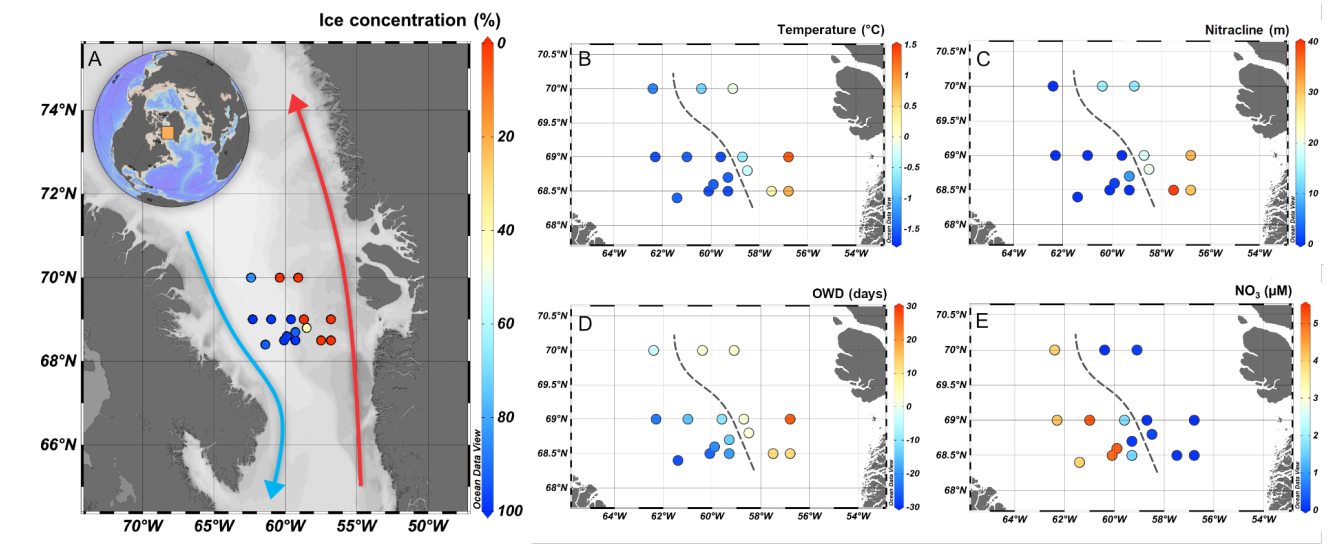 The Amundsen cruise in Baffin Bay (2016)
The Amundsen cruise in Baffin Bay (2016)
Arctic phytoplankton microdiversity across the marginal ice zone: Subspecies vulnerability to sea-ice loss
Abstract
Seasonal phytoplankton blooms are important Arctic phenomena, contributing to global primary production and biogeochemical cycling. The decline in sea-ice extent and thickness favors a longer open-water period with impacts on phytoplankton dynamics. Arctic net productivity is influenced by microalgae living associated with sea ice, with distinct species thought to be favored by ice-covered and ice-free waters. In this study, we investigated the phytoplankton community structure in Baffin Bay, a semi-enclosed sea where Arctic and North Atlantic water masses interact. We compared communities from the ice-free Atlantic-influenced eastern, the marginal ice zone, and the ice-covered Arctic-influenced western Baffin Bay. The community was characterized using 18S rRNA high-throughput amplicon sequencing and flow cytometry cell counting, and compared to environmental data collected during the Green Edge campaign. We sampled 16 stations grouped by sectors according to sea-ice cover. In the sectors associated with sea ice, phytoplankton formed a highly diverse community of smaller taxa, which contrasted with a low-diversity community in ice-free sectors, dominated by larger centric diatoms and Phaeocystis pouchetii adapted to high light/low nutrient conditions. Several phytoplankton species were flagged as indicators for the under-ice and marginal ice zone sectors, including ice-associated taxa such as the diatoms Melosira arctica and Pseudo-nitzschia seriata, but also subspecies representatives of the early-blooming alga Micromonas polaris and the cryptophyte Baffinella frigidus. The strong association of certain taxa with under-ice and marginal ice zone sectors, including Pterosperma sp., Chrysochromulina sp., Micromonas polaris, and B. frigidus, suggest that they might be indicators of diversity loss due to ongoing sea-ice changes in Baffin Bay. We report new intra-species variability of Micromonas polaris suggesting that seasonal specialists could wax and wane over the bloom and non-bloom periods, highlighting the need for detailed year-long studies and the importance of microdiversity when assessing the diversity and distribution of polar phytoplankton.